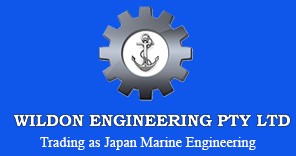Failure and Misalignment of Crankshaft in Yanmar Marine Engines
Blog | December 11th, 2018
Yanmar marine engines are recognized all around the globe as remarkably efficient prime movers. They sip fuel efficiently while producing masses of output energy. Built to minimize energy losses just as they maximize their emission reduction features, they keep ship propulsion systems cool and noise-free. Unlikely as it seems, however, crankshaft misalignment can occur, even in a Yanmar built marine engine.
The Role of a Marine Engine Crankshaft
The cylinders and pistons burn fuel and create kinetic energy. At the other end of the power transmission train, the propulsion system spins. Between them, the crankshaft synchronizes the various engine assemblies. It has an irregular shape, which takes the up-down movement of the engine cylinders and converts it into rotary movement. Aligned properly, cylinders and connecting rods work cooperatively. Valves open and close, the fuel timing system actuates without delay, and the ship engine delivers peak performance cruising power.
The Performance Reduction Effects
Even on a four-stroke outboard motor, the intake stroke synchronizes with the compression stroke, then there’s expansion action and an exhaust stream. All of the strokes align properly. On larger engines, there are other parts synchronizing duties to conduct, but the driving principle is the same. What if a Yanmar marine engine’s crankshaft falls out of alignment? It happens, although rarely. The engine becomes less fuel efficient. It’ll be slow to start, quick to stall, and fast to age. For that latter issue, think about poor cylinder lubrication. The crankshaft is failing in its engine regulating duties. The whole assembly is vibrating and producing noise. The seals are failing because strange backpressures are developing.
Discovering the Misalignment Causes
There are enormous stresses trying to pull high-performance boat engines apart. Yanmar marine engines balance those mechanical forces by ensuring the system crankshaft is built as an absolutely quality-assured engine part. Still, hull stresses can cause misalignment errors, as can bearing saddle cracks. Then, with dirt or filth penetrating the engine bearings, a misalignment failure is likely. Last of all, for smaller boats, beware of grounding and scraping incidents. A boat owner’s first instinct will be to check for hull damage, and that’s a natural enough response. However, if the grounding problem should impact the propulsion system, then a misalignment failure is possible.
Undesirable as it seems, the next action taken by a boat owner should be to take the ship out of the water, but that’s not such a bad option. It’s certainly preferable to buying a whole new engine. Now, with the boat out of the water, or the outboard disengaged, a repair engineer can carry out a crankshaft inspection.
Optimized by NetwizardSEO.com.au
Recent Posts
- Marine Vessel Spare Parts: Australian Global Supplier for Shipping Industries
- Yanmar Fuel Injection Valves: The Power of Precision in Marine Engine Performance
- Why Yanmar Fuel Injection Pumps are the Reliable Choice for Your Engines
- Yanmar Diesel Engine Maintenance: Advantages of Using Genuine Yanmar Parts and Fluids
- Stern Tube Seals for Marine Vessels: Achieve Leak-Proof Propulsion
- Yanmar Compressors: Maintain Peak Performance of Marine Vessels
- Choose the Right Deck Crane: Main Factors to Consider for Your Vessel
- Invest in Mitsubishi VOS System: Setting Sail with Clean Ballast
- YANMAR Diesel Engines: How They Lead the Way in Fuel Efficiency
- Safeguarding Mariners: How Mareflex SOLAS Tapes Ensure Maritime Security
